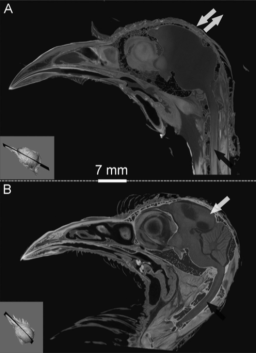
“I2KI-formalin (iodine-potassium iodine-formalin) treatment can obscure the natural X-ray contrast of the bone due to neighboring soft-tissues during staining of avian cephalic material. By contrast, we found the I2E (iodine-ethanol) treatment can increase the X-ray opacity of not only soft tissues (e.g., muscles), but also the bone. Mathematical simulations suggest that remarkably different results from I2E and I2KI-formalin staining are due to different partition coefficients and retardation factors of tissues, fixation effects, and distinct iodine diffusion and sorption patterns. We also found a clear positive relationship between glycogen concentration and grayscale values measured within muscle, epithelia, nervous tissues, and glands regardless of the staining solution used.”
–Lead Author, Zhiheng Li
Head over to the Journal of Experimental Zoology to download the pub!